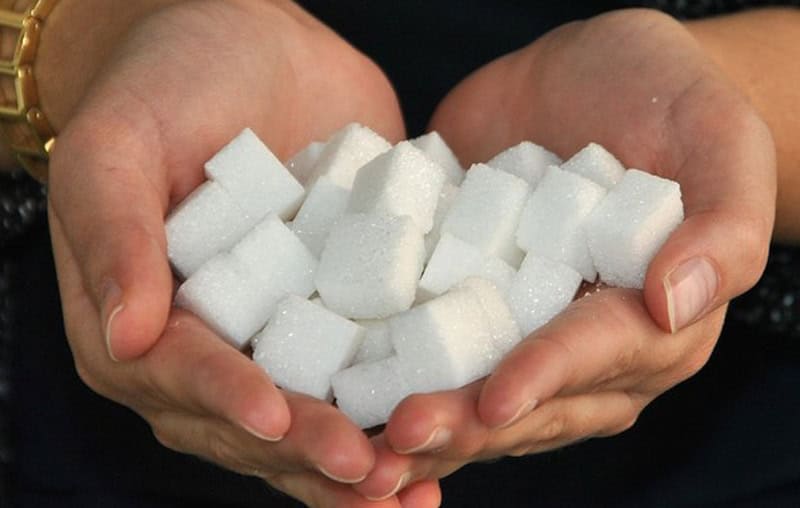Exploring the Distinctions in Usages and Benefits In Between Beet Sugar Vs Cane Sugar
In the culinary globe, the option between beet sugar and cane sugar is not merely regarding sweet taste however entails a nuanced consideration of flavor, application, and influence. While both sugars stem from different plants, each undertakes distinct production processes that discreetly influence their characteristics and suitability for numerous dishes.
Origins and Manufacturing Procedures of Beet and Cane Sugar

Walking cane sugar, on the other hand, originates from the sugarcane plant, an exotic grass belonging to Southeast Asia and now cultivated in exotic zones worldwide. The manufacturing of cane sugar begins with the harvesting of cane stalks, which are crushed to release the juice. This juice is then steamed to focus it, after which it is spun in centrifuges to create raw sugar crystals. These crystals are more refined to create the white sugar generally available in shops.

Nutritional Content and Health Considerations

When comparing the dietary content of beet sugar and cane sugar, it becomes noticeable that both types basically provide the exact same calorie values, with around 16 calories per teaspoon and no considerable nutrient diversity. Each is composed virtually entirely of sucrose, which is a straightforward carbohydrate that provides fast energy yet lacks vitamins, minerals, or fiber. This resemblance reaches their effect on health, especially worrying blood sugar levels. Both sugars, when eaten over, can contribute to elevated blood sugar degrees, a risk aspect for diabetes and various other metabolic disorders. Too much consumption can lead to weight gain and dental problems, as both sugars are similarly cariogenic, advertising tooth degeneration. From a health perspective, moderating intake of any type of sugar, whether from beet or cane, is advisable to avoid these prospective adverse effects on well-being. Thus, neither holds an unique advantage over the other in terms of health advantages.
Taste Profiles and Culinary Applications
Regardless of their similar chemical frameworks, beet sugar and cane sugar vary subtly in taste, which can influence their usage in various cooking contexts. Cane sugar often lugs a hint of molasses, also in its refined blog type, lending a cozy, caramel-like undertone that improves baked goods, coffee, and chocolate-based dishes. This slight molasses taste is especially valued in the cooking industry for adding deepness to sweets and breads. On the other hand, beet sugar is defined by its very fine-tuned, neutral preference, making it a versatile sugar that does not alter the flavor accounts of dishes. This nonpartisanship is specifically useful in fragile recipes, such as light breads, creams, and some sauces, where the intrinsic tastes of other active ingredients are intended to stick out. Subsequently, chefs and food suppliers could select one kind of sugar over the other based on the wanted taste outcome of their culinary productions.
Environmental Impact and Sustainability
While both beet and cane sugars are stemmed from plants, their ecological influences vary considerably because of the unique techniques of growing and processing required for every. Sugar beet growing typically includes substantial automation, which can boost fossil gas intake and carbon exhausts. Nonetheless, beetroots can be grown in cooler climates and require less irrigation, possibly reducing water usage compared to sugarcane. Sugarcane, on the other hand, is commonly expanded in tropical regions where it counts heavily on irrigation and a much longer growing duration, raising its water impact.
In addition, the handling of sugarcane frequently produces a substantial amount of waste, consisting of bagasse, which, although usable as biofuel, regularly contributes to air pollution if shed inefficiently. Sugar beet processing uses more of the raw materials, leading to less waste. Both sectors encounter obstacles in lowering their ecological footprints, but ongoing advancements in agricultural methods and waste monitoring are aiming to boost sustainability.
Economic Elements Affecting the Sugar Sector
The economic dynamics of the sugar industry are substantially affected by international market demands and trade policies. Variables such as tolls, subsidies, and international trade agreements play vital duties fit the affordable landscape. For example, in regions where sugarcane or sugar beet production is subsidized, producers may have a financial advantage that enables them to provide lower costs on the worldwide market. This can produce variations in earnings and market gain access to for producers in countries without such subsidies. Going Here
Additionally, fluctuations these details in international need for sugar, influenced by dietary trends and commercial use in foodstuff, directly influence costs and production levels. beet sugar vs cane sugar. Climate problems likewise play a critical role, as they can significantly influence crop yields and, subsequently, the supply chain. This irregularity introduces a degree of financial uncertainty that can bring about financial investment volatility in sugar production sectors, affecting decisions from planting to market approach
Final Thought
In verdict, both beet and cane sugar have special qualities that match different cooking needs. While cane sugar conveys a rich taste ideal for improving baked goods, beet sugar's neutrality is excellent for lighter dishes.